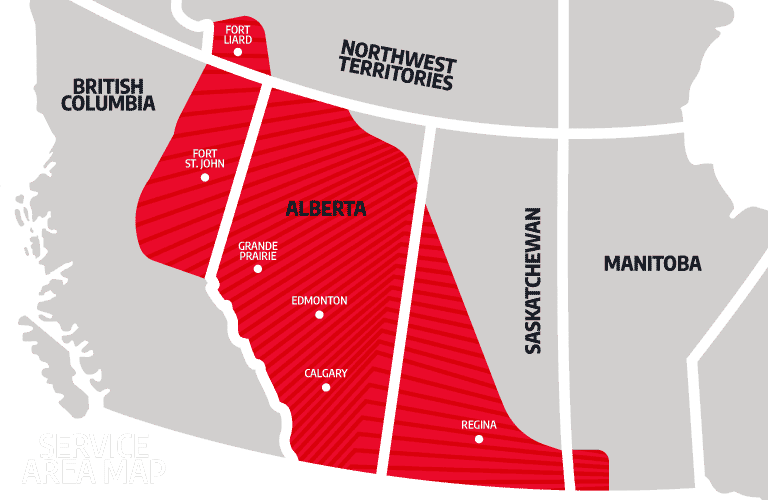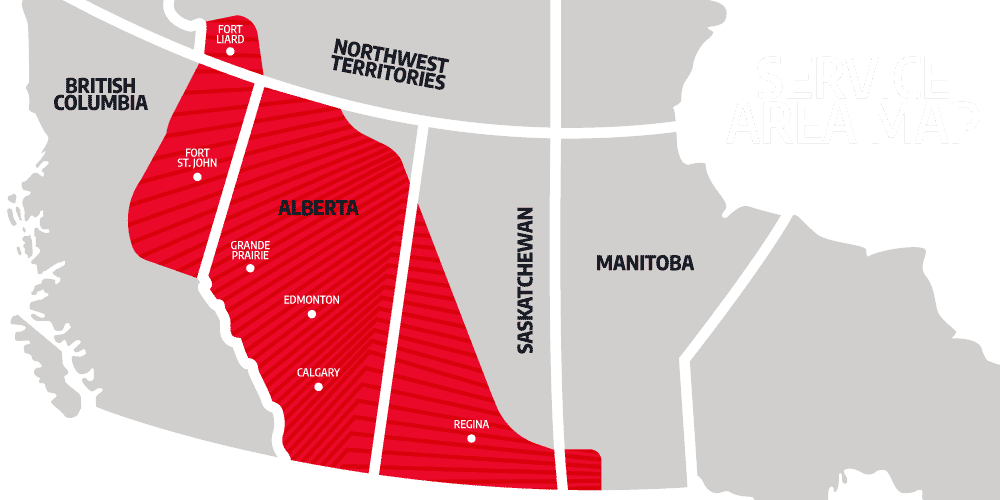Dynamometer Testing
Dynamometer analysis can dramatically help oil and gas producers optimize potential production from their wells by regularly running a dynamometer test. Dynamometer tests can help operators identify significant savings by accurately sizing their equipment to the pumping well, avoiding unnecessary workovers, and overproducing or over pumping their wells.
More than 70% of oil wells in Western Canada are equipped with a rod pump. A rod pump’s advantages are simplicity and high efficiency, but the main drawback is difficulties with diagnostics and repair. Providing continuous operation of oil well equipment is the key issue in the oil well maintenance process.
A dynamometer is a portable electromechanical device that measures the load versus position of the polished rod as the pumping unit moves through each stroke cycle. The visual expression of the polished rod load versus its position is called a dynagraph or, more commonly, a “Dyno” card.
Analyzing a dynamometer card, namely, the dependency of load on the rod string on polished rod displacement. This diagnostic method is widely used due to the simplicity of its implementation, as well as the clarity and easy interpretation of the results. Any problems identified in the well via the dynamometer tests will be represented in the “Dyno” card data.
Dynamometer Test Analysis
The best way to monitor the performance of a pump and pumping equipment is by using dynamometer analysis. This is the most precise method because the data used are the actual loads carried by the rods at the surface, as a response to the pump’s performance, concerning the productivity of the formation and wellbore pressure.
Dynagraph cards to determine the down-hole pumping conditions by calculating the pump intake pressures from the down-hole dynagraph cards are essential to analyze well performance. When an issue is identified, the shape of the dynamometer card visually drastically changes, with each specific fault in operation having a unique characteristic shape of a dynamometer card.
Surface Solutions’ factory-trained technicians accurately utilize dynagraph results to detect potential problems and react to them quickly, eliminating excessive downtime and loss of production. When empowered to make data-driven decisions, oil and gas operators prioritize optimized well production while being mindful of reducing the wear on the pumping equipment and properly sizing it, controlling the operating expenses and workover costs, and prolonging the life of the well and the hardware.
Rod Pump Wells And Reservoirs
A rod pump is a simple device used worldwide to pump oil from the ground. A hole is drilled, cased, and a rod is inserted that moves up and down using a mechanical device dubbed the rod pump. Attached to the bottom of the rod is a cylindrical “bottle” plunger that is used to transport the oil to the surface. On the downward stroke, the plunger is allowed to be filled with oil, and on the upward stroke, this oil is transported to the top, where it is extracted and put into a barrel.
The reservoirs that pumping wells draw from are under low pressure. That pressure is essential to processing oil from the reservoirs and pushing oil to the surface with the aid of a pump. Gas is contained under pressure inside the reservoir, so oil is propelled to the surface. With gas cap-drive reservoirs, the gas rises to the top of the fluid. With a gas solution drive, the gas is dissolved into the fluid. The gas will split out of the fluid as it is pumped to the surface.
As oil and gas are drawn from a reservoir, water may flow into the new space, helping to maintain the reservoir’s pressure. As oil is terminated, the water level will rise, so the tubing perforations must be regularly raised to keep pace with the oil. Pressure may be provided just by gravity, the weight of the oil itself forcing it down to the wellbore. With a gravity drainage reservoir, the oil level will fall as oil is pumped out, so the perforations must slowly be lowered over the well’s life.
The Advantages of Using Dynamometer Testing
Surface Solutions strives to excel and pursue operational excellence in our day-to-day operations. Our business principles identify how we hold ourselves accountable to the environment, safety performance, governance, and the community. Our factory-trained technicians are experts at performing Dynamometer Tests and “Dyno” evaluations that prioritize safety and efficiency.
Surface Solutions’ trained professionals provide our customers with the data they need to make good, profitable decisions.
The benefits of using dynamometer testing:
- Reduce downtime and unnecessary workover
- Improve maintenance program efficiency
- Increase resale value
- Validate before purchase by testing pump potential
- Eliminate reconditioning errors
- Indicate when and what repairs should be done
- Efficiently identify problems
- Simulate loaded and overclocked conditions
Surface Solutions’ experts accurately collect, analyze and chart dynagraph results allowing our clients to make real-time decisions with accurate data from the field. They can prioritize optimized well production while being mindful of reducing the wear on the pumping equipment, controlling the operating expenses and workover costs, and prolonging the life of the well and the hardware.



